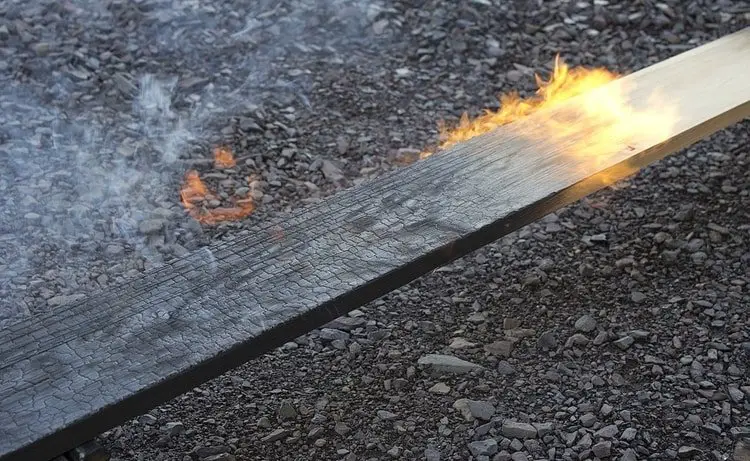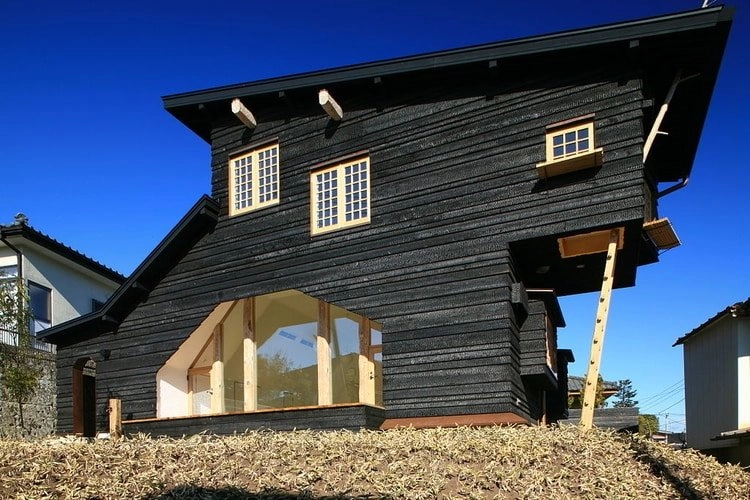Shou sugi ban is a term used by the Japanese to mean charred cedar board. In particular, Shou sugi ban encompasses charring cedar planks, burnishing burnt wood using sandpaper, and wire brushes before you seal it using natural oil. It is also known as Yakisugi. The technique process charred and blacked wood siding, which is resistant to different weather elements and insects, making it ideal for exterior and interior applications.
History
The Shou sugi ban practice dates back to the early 1700s. and entails charring wood to offer a lasting and beautiful timber. The Japanese invented the technique to prolong the lifespan of wood, making it resistant to decay, infestation, and fire. The charred wood featured on facades of rural Japanese homes, which were used to store valuable items that needed protection. However, the Shou sugi ban practice became less famous in the 20th century because of the invention of modern plastics and reduced wood supply. In recent years, designers and architects in Japan, North America, and Europe revived the technique using the practice for internal and external cladding projects.
Why Use Shou Sugi Ban?
View this post on Instagram
Aesthetic appeal of charred wood cladding
The finished effect of charred wood is desirable. The technique uses various types of tried and tested woods and varying the finishing and brushing process. When wood is charred, it establishes a solid definition between grain and wood. You can infill the grain with any color to establish a bespoke finish to achieve a contemporary look. That is why the technique is normally used for bold interior and exterior design applications. It aims to achieve a traditional look by charring cedarwood with a crackled charred finish that is heavily brushed to define the grain or brushed lightly to establish a smooth finish.
Adding strength
By charring timber it enhances its strength. Although it might appear strange, removing the outer layer tends to strengthen wood since the technique draws moisture.
Enhancing fire resistance
Surprisingly, the charring wood process is used to enhance the resilience of wood to burning. Shou sugi ban, a controlled technique, helps remove the soft outer cells that ignite quickly. Consequently, it reveals the tough and lignin cells, which need a considerable amount of temperature to ignite. Charred wood will contain different thermodynamic conductivity when compared to untreated wood. Due to concerns regarding fire resistance of wood cladding, you can also add a fire-retardant treatment when conducting the Shou sugi ban practice.
To ensure timber repels insects
Fungi, mold, and insects can contribute to the deterioration of timber. In the other traditional methods of preserving wood, you could add coatings to minimize risk infestations. However, with charred timber cladding, you don’t need to add coating because the outer carbon layer will protect it from insects. When it comes to fungi and mold, they require specific oxygen and moisture levels to grow. Fortunately, techniques such as charring, adding protective coatings, or kiln drying timber will reduce the risk of infestation.
Weatherproof
Wood is naturally durable, strong, organic, and hygroscopic. Due to its hygroscopic nature, it means that timber expands and contracts to ever-changing moisture levels. When you expose timber to varying seasons, it can rot, warp and crack. Therefore, you establish an outer barrier when you apply paints, varnishes, oils, and other protective coatings. Since charring is not an additional coating, it tends to last for an extended period.
Types of wood used
The best kind of wood for Shou sugi ban depends on the project. Notably, you should select wood that is porous and light to achieve the best results. One of the most affordable and readily available types of wood you can use is the Siberian larch. Siberian larch is also durable, non-toxic, and will produce a more beautiful pattern when you char it. It’s great for interior or exterior projects and will offer great results on different cladding and decking applications.
You can use other kinds of wood such as cedar, pine, and spruce in the Shou sugi ban process. Spruce wood has different colors ranging from red-brown, creamy white, and light yellow. Spruce is also lightweight and has a medium density, making it ideal for the Shou sugi ban project. Pine is also closely related to spruce and makes another great choice for your project.
Accoya wood has a lifespan of more than 50 years without rotting. This type of wood offers a striking and distinctive finish that is attractive. Most importantly, cladding or siding the Accoya will produce the best finish, non-toxic, and has low maintenance.
View this post on Instagram
Shou sugi ban process

Although the Shou sugi ban can take several years for you to master, if you have the appropriate tool, you can easily learn it by following the steps below:
Source the wood: You can begin the process by looking for the recommended wood for your project. Other woods including basswood, southern cypress, western red cedar, or other types of softwood are all possibilities. Although you can use hardwood, its dense nature might not be appropriate for classing, decking, and siding projects.
Burning wood: Use a propane-powered blowtorch to char the wood. You can add scorch marks to wood areas without blackening the whole piece of wood completely. Safety first – wear protective clothing, including glasses, and ensure you have a fire extinguisher and water nearby.
Brushing the wood: After completing the wood-burning, you can wet the wood before you begin scrubbing it using a coarse sandpaper or wire brush. Using sandpaper, you will remove the outer char from wood without smoothening it because you will want to maintain its textured surface and visible patterns. However, you should stop sanding the wood at your desired wood tone.
Wash the wood: You can use water to wash the wood to remove loose charred pieces and dust. After that, you can allow it to dry.
Apply a finish: You can seal your wood to protect it from detrimental elements. If you wish to achieve an alligator skin look (with bumps and ridges), you can use a polyurethane sealer. However, if you wish to achieve a smoother surface, you can oil the wood. Most importantly, using linseed oil can enhance the grain accents of wood combined with charred black coloration to offer you a unique look.
Featured Image Credit: Wikimedia

